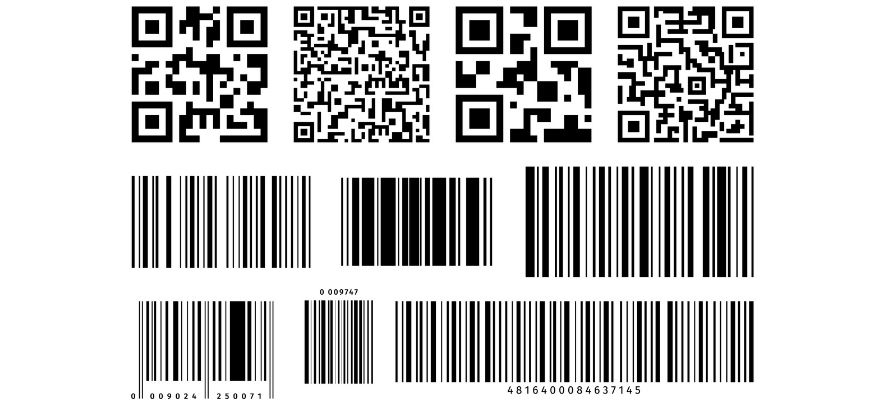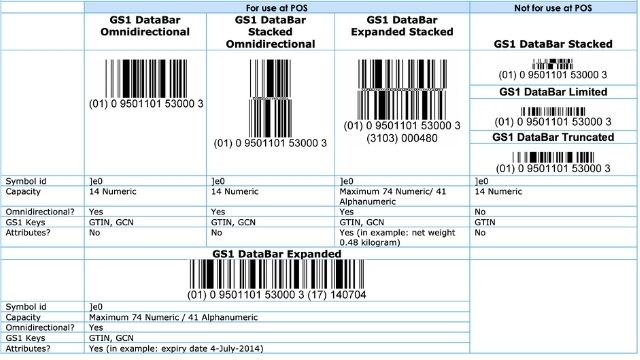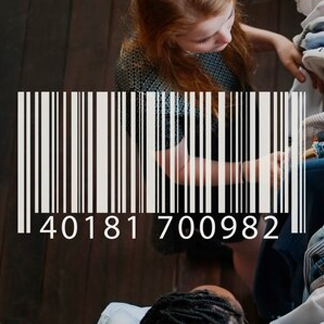Types of barcodes: Which one is right for your business

Digital & Technology
164 week ago — 5 min read
Barcodes are symbols that can be scanned electronically using a laser or camera-based systems.
They are used to encode information such as product numbers, serial numbers, and batch numbers. Barcodes play a key role in supply chains, enabling parties like retailers, manufacturers, transport providers, and hospitals to automatically identify and track products as they move through the supply chain.
GS1 is a not-for-profit global organisation that has over 2 million member companies and administers the GS1 System of Standard barcodes. GS1 manages several types of barcodes. Each is designed for use in a different situation.
Different types of GS1 barcodes
EAN/UPC family
Instantly recognisable 1D barcodes used in retail all over the world. They are the longest-established and most widely used of all GS1 barcodes. EAN/UPC barcodes are suitable for the retail point-of-sale (POS) because they are designed for the high-volume scanning environment. Applications are limited to GTIN, Restricted Circulation Numbers (RCN), coupons, and in-store codes. EAN/UPC barcodes are also applied in general distribution and logistics environments. EAN/UPC minimal sizes are increased where they must be scanned at both retail POS and in general distribution.

DataBar family
Compact 1D barcodes that can hold additional product attributes such as the weight of fresh foods. DataBar barcodes are often used to label fresh foods. These barcodes can hold information like an item's batch number or expiry date, in addition to other attributes used at the point-of-sale such as the item weight.
DataBar barcodes are often used in retail and can be read by laser scanners.
The GS1 DataBar family consists of seven types of barcodes. Four of the barcodes are applied in scanning at retail point-of-sale (POS), two of which are able to carry additional information such as a serial number, lot number of the expiry date. GS1 DataBar is also applied in general distribution and logistics environments.

One-dimensional (1D) barcodes
These are used exclusively in general distribution and logistics. Versatile 1D barcodes used to represent ID keys and attributes in a distribution environment.
The 1D barcodes enable items to be tracked through global supply chains. The GS1-128 barcode can carry any of the GS1 ID keys, plus information like serial numbers, expiration dates, and more. The ITF-14 barcode can only hold the Global Trade Item Number (GTIN) and is suitable for printing on corrugated materials.
GS1-128 and ITF-14 are only applied in general distribution and logistics environments, and not applied at the retail point-of-sale (POS). GS1-128 barcodes can carry all GS1 keys and attributes, ITF-14 barcodes can only carry the GTIN. If a barcode containing only GTIN needs to be printed directly on a corrugated box, the ITF-14 barcode is often applied since it is easier to print and the required barcode quality grade is less strict.

Two-dimensional (2D) barcodes
Compact, high capacity 2D symbols suitable for representing all GS1 keys and attributes.
Two-dimensional (2D) barcodes look like squares or rectangles that contain many small, individual dots.
A single 2D barcode can hold a significant amount of information and may remain legible even when printed at a small size or etched onto a product. 2D barcodes are used in a wide range of industries, from manufacturing and warehousing to logistics and healthcare.
GS1 DataMatrix, GS1 QR Code, and GS1 DotCode are "two-dimensional (2D) matrix symbology" symbols that can carry all GS1 keys and attributes. It can be applied to hold trade item information such as the item expiry date, serial number, or batch/lot number.
For regulated healthcare trade items, GS1 DataMatrix is the only allowed 2D barcode. GS1 DotCode shall only be used to meet the requirements of the EU tobacco traceability regulation EU 2018/574

The Future of barcodes on-pack
Business and regulatory demands on product packaging have grown dramatically in recent years. Drivers of consumer transparency, regulatory compliance, marketing engagement, and sharing of traceability information are all essential considerations of the industry and of the solution providers that serve them today. Today, product packaging often contains multiple barcodes and symbols that are intended to serve varied purposes. Unfortunately, they cause consumer and supply chain confusion, are not interoperable, and aren’t providing maximum value to anyone across the value chain. Globally consistent guidance from GS1 is essential as we navigate into the future.
Also read: How can barcoding help in your supply chain and inventory management?
Image source: shutterstock.com
Posted by
GlobalLinker StaffWe are a team of experienced industry professionals committed to sharing our knowledge and skills with small & medium enterprises.
View GlobalLinker 's profile
Other articles written by GlobalLinker Staff
Managing Your Energy (not time) is the Key to Productivity
19 Apr 2024, 12:27
Most read this week















Comments
Please login or Register to join the discussion